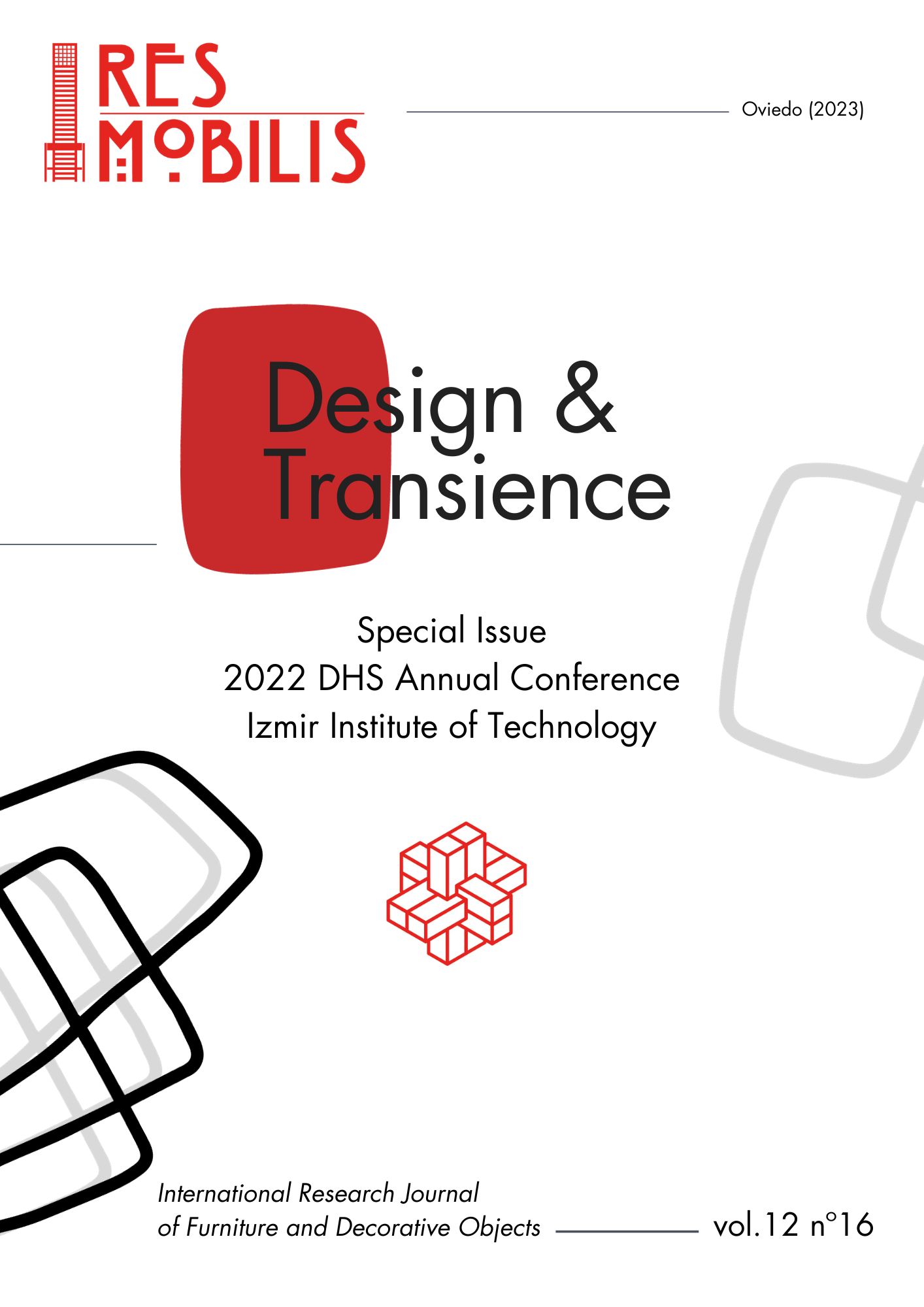Resumen
Grouper is a computational interface design, i.e. a web-based platform supporting researchers working with (visual) digital collections. The significance of this platform is about the positioning of researchers and offering them the possibility to create, manage and visualise a collection within their research process. Digital collections are central to the work with an early visualisation facility that allows for iterations in a way where visualisation becomes researching rather than a showcase at the end of research. Focusing on the Izmir International (Trade) Fair and ephemera collections that define an important period in Izmir's history, this study and Grouper ask: ‘How can digital tools help to trace, piece together and make sense of the design heritage of the Izmir International Fair, which includes a wide range of design practices and objects spread across nine decades?’ Working with the ephemera of the Izmir International Fair propels new conceptual and practical additions to Grouper, emphasizing the concepts of ‘assemblage (collection of collections)’ and ‘collaboration’. Thanks to the Grouper computational interface, the object-Fair can be observed through a new lens offered by the multiplicity of visual ephemera included in the assemblage and collaboration as a result of collection(s) from multiple sources and people. This lens of Grouper allows the creation of a content and narrative that was not previously available and enables to reenact the transitory moments of Izmir International Fair. Throughout this work, notions of transience and permanence accompany us in piecing ephemera together, in digitising collections, in Grouper's loose, flexible, modular structured research process, and in the persistence of transient objects and memories in new narratives.
Citas
Anderson, Ben, and McFarlane, Colin. “Assemblage and Geography,” Area 43 (2011), 124–27.
Bardzell, Jeffrey, and Bardzell, Shaowen. “What Is ‘Critical’ about Critical Design?” in CHI’13: Proceedings of the SIGCHI Conference on Human Factors in Computing Systems, 3297–3306. New York: Association for Computing Machinery, 2013.
Bogost, Ian. Alien Phenomenology, or What It's Like to Be a Thing. Minneapolis: University of Minnesota Press, 2012.
Boyd Davis, Stephen, and Kräutli, Florian. “The Idea and Image of Historical Time: Interactions between Design and Digital Humanities,” Visible Language 49 (2015), 100–119.
Bryant, Levi R. The Democracy of Objects. Ann Arbor: Open Humanities Press, 2011.
Byrne, Sarah, et al. “Networks, Agents and Objects: Frameworks for Unpacking Museum Collections,” in Unpacking the Collection: Networks of Material and Social Agency in the Museum, edited by Sarah Byrne, Anne Clarke, Rodney Harrison, and Robin Torrence, 3–26. New York: Springer, 2011.
DeLanda, Manuel. Assemblage Theory. Edinburgh: Edinburgh University Press, 2016.
Fuar Matbaası Facebook page, https://www.facebook.com/fuarmatbaasi/. Accessed June 2, 2023.
Gönlügür, Emre. “Exhibiting American Domestic Modernity at the Izmir International Fair,” in Mid-Century Modernism in Turkey: Architecture Across Cultures in the 1950s and 1960s, edited by Meltem Ö. Gürel, 85–112. London: Routledge, 2015.
Harrison, Rodney. Heritage: Critical Approaches. Milton Park: Routledge, 2013.
Harrison, Rodney, Byrne, Sarah, and Clark, Anne. Reassembling the Collection: Ethnographic Museums and Indigenous Agency. Santa Fe: School for Advanced Research Press, 2013.
Keim, Daniel, et al. “Visual Analytics: Definition, Process, and Challenges,” in Information Visualization: Human-Centered Issues and Perspectives, edited by Andreas Kerren, John T. Stasko, Jean-Daniel Fekete and Chris North, 154–75. Berlin, Heidelberg: Springer Berlin Heidelberg, 2008.
Kent-Yaşam, “Fuar Lozan Kapısı 75 yaşında,” https://kentyasam.com/2013/07/08/fuar-lozan-kapisi-75-yasinda/. Accessed June 2, 2023.
Lorie, Raymond A. “Long Term Preservation of Digital Information,” in JCDL’01: Proceedings of the 1st ACM/IEEE-CS joint conference on Digital Libraries, 346–352. New York: Association for Computing Machinery, 2001.
Manovich, Lev. Cultural Analytics. Cambridge: The MIT Press, 2020.
Mbembe, Achille. “The Power of the Archive and its Limits,” in Refiguring the Archive, edited by Carolyn Hamilton, Verne Harris, Jane Taylor, Michele Pickover, Graeme Reid and Razia Saleh, 19–27. New York: Springer 2nd edition, 2002.
Ratto, Matt. “Critical Making: Conceptual and Material Studies in Technology and Social Life,” The Information Society 27 (2011), 252–260.
Reyes, Everardo, and Manovich, Lev. “Cultural Viz: An Aesthetic Approach to Cultural Analytics,” Leonardo 53 (2020), 408–414.
Routhier Perry, Stephanie. “Digitization and Digital Preservation: A Review of the Literature,” School of Information Student Research Journal 4 (2014), 1–12.
Rummelhoff, Ivar, et al. “An Abstract Machine Approach to Preserving Digital Information,” IEEE Access 9 (2021), 154914–154932.
Savasta, Daniele, and Kocabıyık, Elif. “Beyond Timelines and Data Tables: Visualization Tools for Design History Studies.” Paper presented at the Design History Society Annual Conference: Design and Time, London, UK, September 8-10, 2016.
Savasta, Daniele, and Kocabıyık, Elif. “Designing a Computational Interface for the Study of Collections: ‘Grouper’ as a Research Tool,” in NERD - New Experimental Research in Design 2: Positions and Perspectives, edited by Michelle Christensen, Ralf Michel and Wolfgang Jonas, 120–145. Basel: Birkhäuser, 2021.


